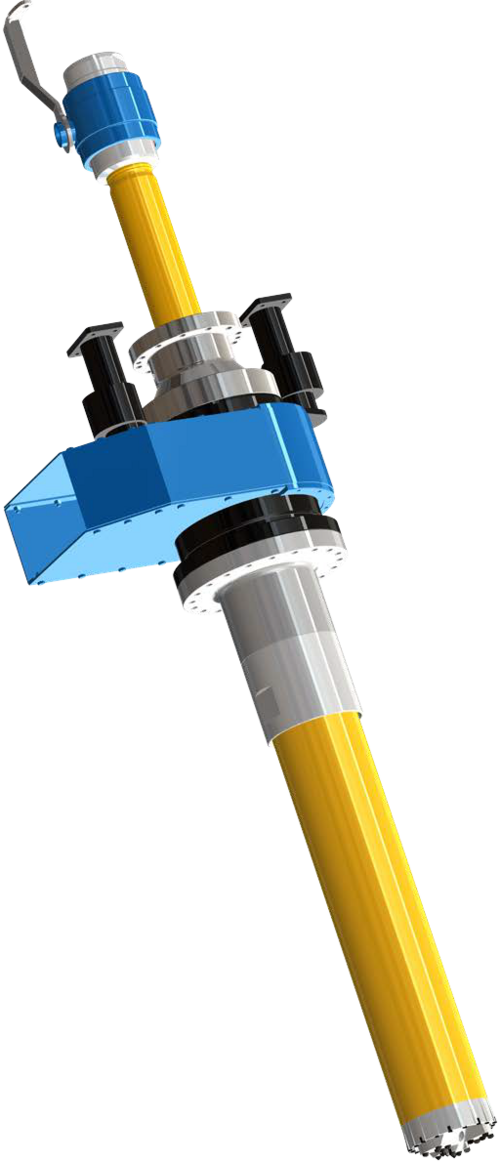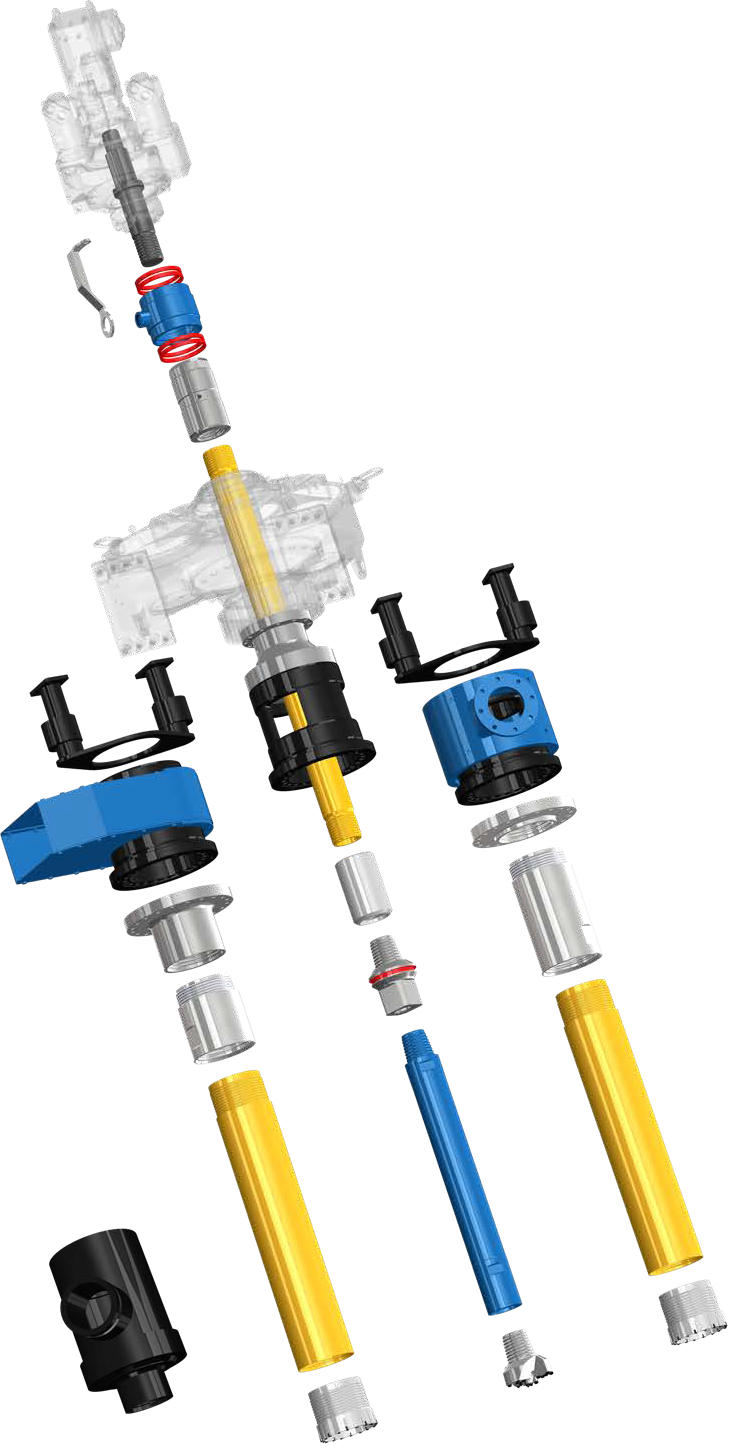Depending on the intended purpose of the borehole, for instance, to support a bored diaphragm wall, or a subterraneous curtain wall, a cased drilling system is necessary to realise such a borehole.
The system listed here features an external and an internal drill string, respectively. The internal drill string is driven by a hydraulic drifter, while the outer drill string is driven by a rotary head or vibro drill head unit, each drill string driven independently from the other. This system is characterised by outer casings and inner drill rods that rotate in opposite directions to each other. The flushing for the discharge of the cuttings is directed through the centre of the inner drill string, conveyed to the toe, of the borehole and carried back up the drill string together with the spoils, above ground and expelled from the system.
Due to the individual movement of the rotary heads on their respective slide carriages, it is possible to either drill with the inner drill string completely retracted and encased within the outer drill string, or to drill with the inner drill string leading the outer drill string acting like a pilot. The latter method results in a greater drilling accuracy. For this reason, the system is applied in canopy tube, exploratory drilling, as well as anchor drilling applications.
Depending on the ground conditions, the inner percussion rods that are continuously rotated with percussion may be simultaneously drilled with a DTH hammer. Here a specially designed flushing head, the Dual Percussive Flushing Head (DPFH) allows for the simultaneous operation of hydraulic drifter and DTH hammer.
Should flushing with air or water be prohibited due to inherent structural or environmental concerns, inner auger drill rods may be used to carry the spoils to the surface.


